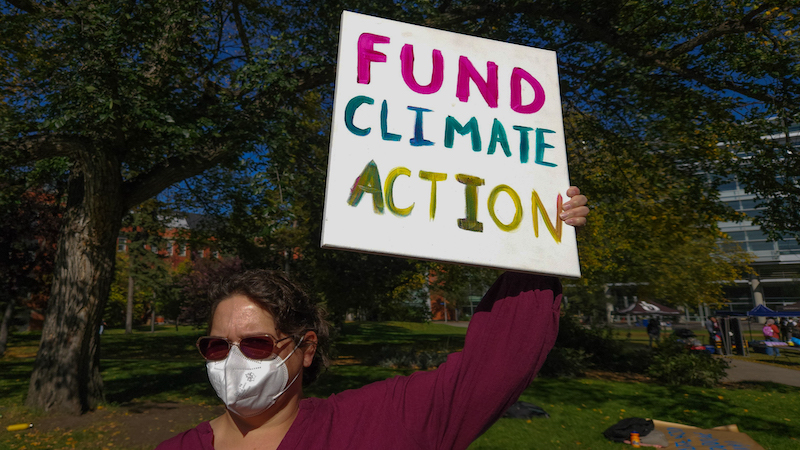Switzerland pitches criteria to include China and Gulf States in the donor base. But experts recommend incentives not coercion
As diplomats get ready to restart talks next month over the new UN climate finance target, the question of who should be putting money into the pot looms large over the negotiations.
Most developing countries offer a straightforward answer: keep the status quo, meaning only the countries classified as industrialised when the UN climate treaty was adopted in 1992.
But this club of developed nations, vocally led by the European Union and the United States, argues that the world has changed dramatically over the past three decades.
They now want other countries that have become wealthier – and more polluting – to pitch in for the post-2025 New Collective Quantified Goal (NCQG), set to be agreed at the COP29 climate summit in Baku this November.
China targeted
The EU wrote this week, in a document submitted as part of the NCQG negotiations, that “the collective goal can only be reached if parties with high [greenhouse gas]-emissions and economic capabilities join the effort”.
The US echoed that position in its latest submission, arguing that “those with the capacity to support others” in pursuing action to cut emissions and boost climate resilience “must also be accountable” for delivering on the climate finance target.
But, as governments polish their arguments ahead of the next round of talks in mid-September, climate finance experts warn of an uphill battle to get everyone to agree to a fair and accurate way to broaden the donor base.
FAO draft report backs growth of livestock industry despite emissions
For instance, as the world’s top polluter and the second-largest economy, China is the primary target of the finger-pointing. But, when the country’s emissions and wealth are divided by its enormous population, China does not rank among the main candidates for an expanded contributors’ pool, according to climate finance studies.
At annual climate talks in the German city of Bonn in June, China’s negotiator reacted angrily at suggestions his country should become a donor. “We have no intention to make your number look good or be part of your responsibility as we are doing all we can to save the world,” he said.
Swiss indicators
Switzerland was the first nation to propose precise criteria, as its latest submission early this month set out two detailed metrics to expand the list of contributors beyond developed countries.
The first would target the ten largest current emitters of carbon dioxide that also have a gross national income (GNI) per capita – adjusted for purchasing power parity – of more than $22,000.
Under this measure, Saudi Arabia and Russia would be included. China would too if it is calculated based on current international dollars, which Climate Home understands would be the Swiss intention, even though the proposal does not specify.
But China would be excluded if GNI per capita were based on constant 2021 international dollars, highlighting the ambiguity of the proposals at this point.
Populous nations with large absolute emissions like India, Indonesia, Brazil and Iran would be left out because the average wealth of their residents falls below the threshold, according to World Bank data.
The second category in the Swiss proposal targets countries that have cumulative past and current CO2 emissions per capita of at least 250 tonnes and a purchasing power parity-adjusted gross national income per capita of more than $40,000.
Assuming the Swiss proposal means emissions starting in 1990, then fossil fuel-producers in the Gulf like Qatar, the United Arab Emirates and Bahrain would be included, alongside South Korea, Singapore, Israel, Czechia and Poland.
Swiss lead negotiator Felix Wertli told Climate Home the details of cut-off points can be discussed during negotiations.
“The beauty and challenge of specific criteria is that everybody can check where they stand,” he added. “But they are also dynamic so countries can move in or out depending on whether they have a positive economic development, or more or less ambitious climate policies.”
But climate finance experts told Climate Home they are sceptical such strict criteria will work at the negotiating table and make it into a final decision.
“Discussing thresholds and indicators is a technical and politically charged issue, and it will be very difficult to get everyone to agree on them,” Laetitia Pettinotti, a research fellow at ODI, told Climate Home. She added that countries need to be encouraged to consider whether their emissions and GNI per capita are similar to those of developed countries, while also taking into account their climate vulnerability.
Pieter Pauw, assistant professor at the Eindhoven University of Technology, said the current system is “outdated and increasingly dysfunctional”, but the focus should be on making it less rigid rather than finding “arbitrary” ways to add more countries to a list.
Pauw is the co-author of a new study looking at options to increase the number of climate finance providers.
New “net recipients” category
The paper found that several developing countries, including China, Saudi Arabia and Russia, have shown appetite to finance multilateral development funds, such as the Global Fund to Fight AIDS, Tuberculosis and Malaria, but not those dedicated to climate action.
“It’s because the climate disco
Read More

